Scientists on expeditions with NOAA Ocean Exploration have spotted all kinds of weird and wonderful creatures over the years, which made us start to wonder: which deep-sea animal is the coolest, spookiest, and strangest of all?
We had a hard time deciding, so we posed the question to our friends online: Which animal truly deserves to be named NOAA Ocean Exploration’s Spooky Star?
After a vigorous competition, website visitors chose the bigfin squid as the contest’s champion. Congratulations to the winner, and thank you to everyone who voted! You can learn more about all the strange and wonderful competitors below.
Final Round Complete
The bigfin squid is your spooky star champion!
Rhinochimaera, bigfin squid, and Casper the octopus
Fans have chosen our top three competitors, so now it’s time to vote for the Spooky Star champion! Make your choice below and be sure to check back on Halloween for our announcement of the winner.
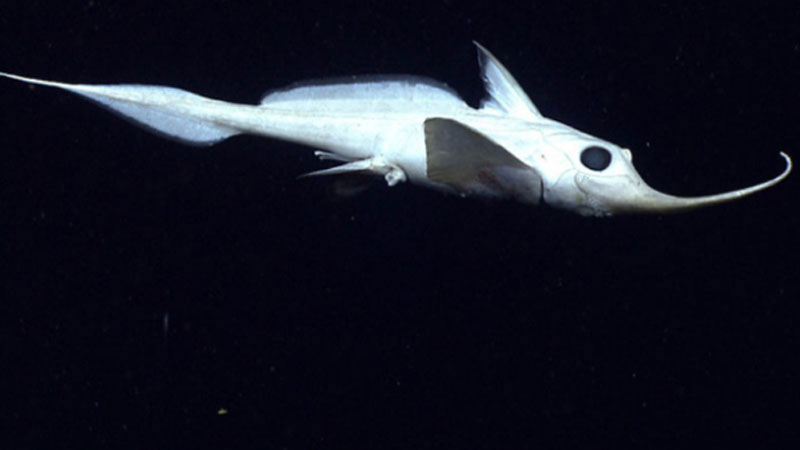
#1
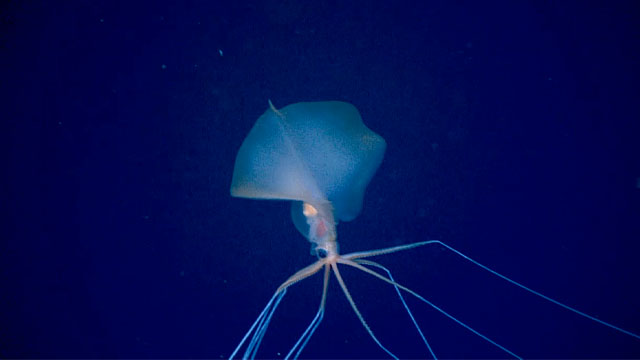
#2
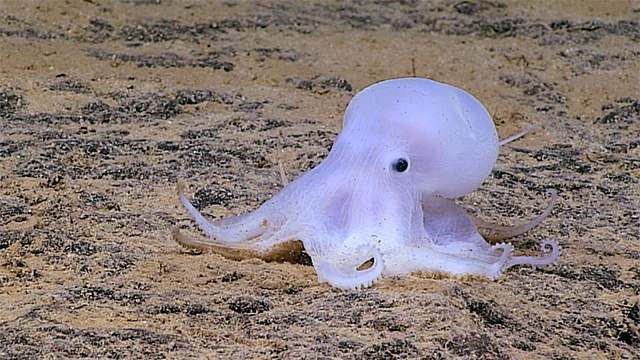
#3
Option 1: Rhinochimaera
What is a rhinochimaera?
Commonly known as ghost sharks or rat fish, chimaeras are cartilaginous fish most closely related to sharks and rays. The "rhino" in rhinochimaera refers to the long noses that give some species of chimaera such a distinctive look, like the one in the video above. This rhinochimaera was found while exploring Hydrographer Canyon as part of the Northeast U.S. Canyons Expedition 2013.
Why should you vote for it?
This rhinochimaera looks quite ghostly floating through the water. Movie fans might recognize that this particular animal looks a lot like Zero, Jack Skellington’s ghost dog in "The Nightmare Before Christmas."
Option 2: Bigfin squid
What is a bigfin squid?
Bigfin squid (Magnapinna sp.) are remarkable animals. Distributed throughout the global ocean, they can live deeper than any other known squid. The specimen in the video above was recorded at a depth of 2,385 meters during NOAA Ocean Exploration’s Windows to the Deep 2021 expedition, but they’ve also been found over 6,200 meters below the surface! Bigfin squid can reach lengths of more than 6 meters (20 feet), though most of that length is owed to their very thin arms and tentacles that may be used to catch small prey with microscopic suckers.
Why should you vote for it?
Let’s face it: Encountering a squid that’s 6 meters long (or longer!) would probably startle most people. The bigfin squid, though, has managed to attract a good number of fans who appreciate just how incredible it is. The unusual, seemingly "jointed" arms, the mysteries surrounding its lifestyle, and, of course, the huge fin crowning its body have made the bigfin squid one of the best-known ambassadors of deep-ocean science.
Option 3: Casper the octopus
What is the "Casper" octopus?
This octopus was found during the 2016 Hohonu Moana: Exploring Deep Waters off Hawaiʻi expedition at a depth of 4,290 meters (2.7 miles). The discovery was a very happy surprise for the team participating in the expedition, as no octopus of this one’s type had ever been spotted at such extreme depths before. Most octopods found in the very deep sea are cirrate or "dumbo" octopods, while incirrate octopods like Casper look more similar to their shallow cousins. Casper is almost certainly an undescribed species and may not even belong to a described genus.
Why should you vote for it?
This octopus’s lack of pigment and its ethereal movements give it a ghostly-yet-cute appearance, which led its fans on social media to nickname it "Casper." Both spooky and cuddly: who could ask for anything more?
Round 3 Complete
Dandelion siphonophore, sea spider, and Casper the octopus
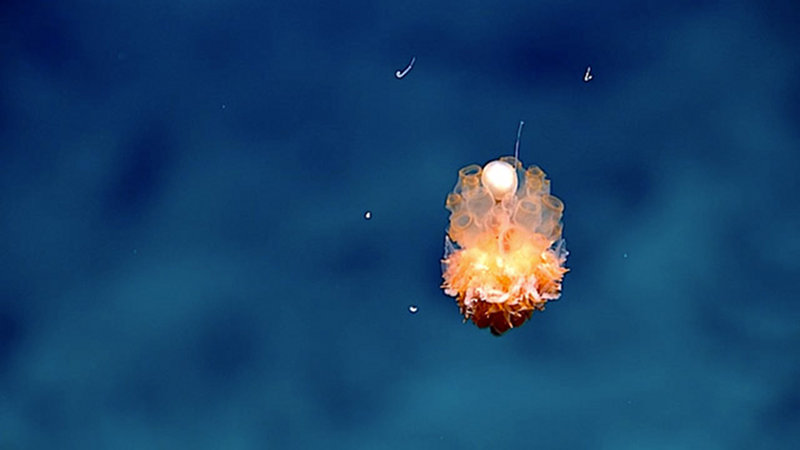
#1
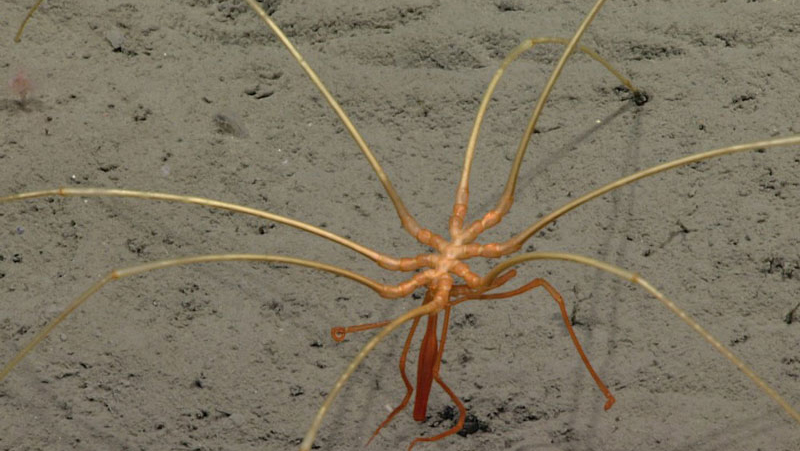
#2

#3
Option 1: Dandelion siphonophore
What is a dandelion siphonophore?
While they often look like one strange animal, siphonophores are actually a colony of individuals working together! Some of these individuals collect food while others handle jobs like defense, reproduction, or propelling the colony through the water. The most famous siphonophore is probably the Portuguese Man-o-War, but the rarely-seen dandelion siphonophore is just as fascinating. While the animal in the video above was found swimming through the water during the 2016 Deepwater Exploration of the Marianas, these ball-shaped animals can also be found anchoring themselves to the seafloor using their tentacles (which explorers thought made them look similar to a dandelion).
Why should you vote for it?
The dandelion siphonophore’s round shape and bright orange color remind many people of a jack-o’-lantern lighting up the night on Halloween. While this animal wouldn’t really be a good fit for your front porch or balcony, it’s certainly a treat to find one on a trip to the deep sea!
Option 2: Sea Spider
What is a sea spider?
Not a spider, for starters! Both spiders and sea spiders are arthropods, but spiders belong to the class Arachnida while sea spiders belong to the class Pycnogonida. Many sea spiders are tiny, but some can have a leg span of over 50 centimeters (20 inches). Sea spiders have even been observed using their legs to swim! The individual in the video above was found at a depth of 1,477 meters (4,845 feet) during the second Voyage to the Ridge expedition in 2022. These animals may look intimidating to some, but they are completely harmless to humans and are important members of the ocean ecosystem.
Why should you vote for it?
While it isn’t a spider, the sea spider does look remarkably similar to its relatives on dry land that are commonly used as Halloween decorations. The sea spider also has vampiric tendencies: lacking teeth, it instead uses a tubelike mouth called a proboscis to suck fluids from its soft-bodied prey like anemones and worms.
Option 3: Casper the octopus
What is the "Casper" octopus?
This octopus was found during the 2016 Hohonu Moana: Exploring Deep Waters off Hawaiʻi expedition at a depth of 4,290 meters (2.7 miles). The discovery was a very happy surprise for the team participating in the expedition, as no octopus of this one’s type had ever been spotted at such extreme depths before. Most octopods found in the very deep sea are cirrate or "dumbo" octopods, while incirrate octopods like Casper look more similar to their shallow cousins. Casper is almost certainly an undescribed species and may not even belong to a described genus.
Why should you vote for it?
This octopus’s lack of pigment and its ethereal movements give it a ghostly-yet-cute appearance, which led its fans on social media to nickname it "Casper." Both spooky and cuddly: who could ask for anything more?
Round 2 Complete
Aphyonid, bigfin squid, and isopod
Bigfin squid has won this round and will move on to the finals!
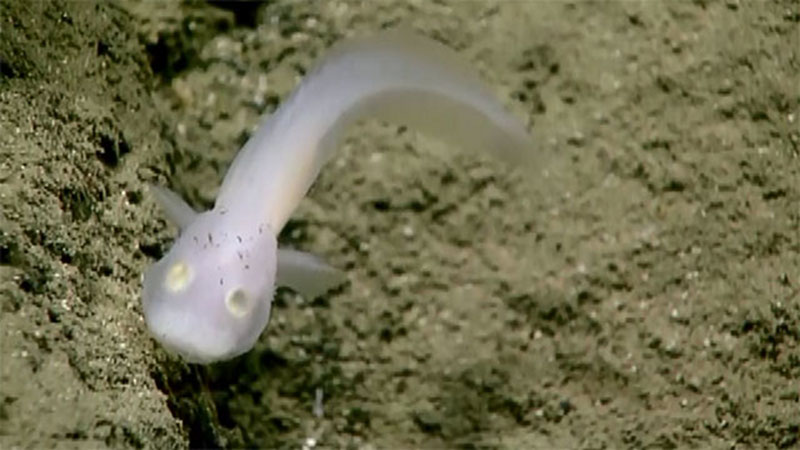
#1

#2
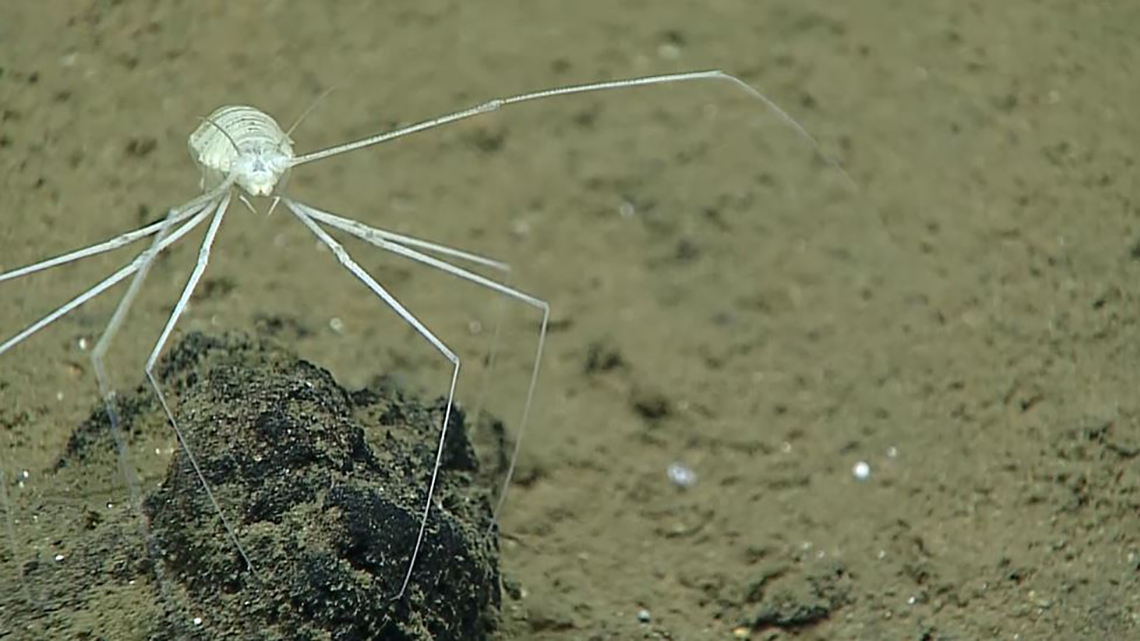
#3
Option 1: Aphyonid (ghost fish)
What is an aphyonid?
Aphyonidae is the scientific name for a family of eel-like deep-sea fishes. The individual in the video above was the first of its family to ever be seen alive: It was spotted at a depth of about 2,500 meters by scientists participating in NOAA Ocean Exploration’s 2016 Deepwater Exploration of the Marianas. The fish has highly reduced eyes that are adapted to the extreme darkness of its habitat.
Why should you vote for it?
With its unusual eyes and its scaleless, mostly transparent body, this aphyonid has clearly earned its "ghost fish" nickname. Plus, while its features are a great fit for Halloween, the aphyonid also has that "cute" factor that’s hard to beat.
Option 2: Bigfin squid
What is a bigfin squid?
Bigfin squid (Magnapinna sp.) are remarkable animals. Distributed throughout the global ocean, they can live deeper than any other known squid. The specimen in the video above was recorded at a depth of 2,385 meters during NOAA Ocean Exploration’s Windows to the Deep 2021 expedition, but they’ve also been found over 6,200 meters below the surface! Bigfin squid can reach lengths of more than 6 meters (20 feet), though most of that length is owed to their very thin arms and tentacles that may be used to catch small prey with microscopic suckers.
Why should you vote for it?
Let’s face it: Encountering a squid that’s 6 meters long (or longer!) would probably startle most people. The bigfin squid, though, has managed to attract a good number of fans who appreciate just how incredible it is. The unusual, seemingly "jointed" arms, the mysteries surrounding its lifestyle, and, of course, the huge fin crowning its body have made the bigfin squid one of the best-known ambassadors of deep-ocean science.
Option 3: Isopod
What is an isopod?
"Isopod" refers to all of the many animals in the order Isopoda, which contains some types of crustaceans. The best-known isopods are the land-dwelling ones that you might find at a local park or in your yard, which are commonly known as pill bugs, roly-polies, or woodlice (among many other names). Plenty of isopods live in the ocean, though, and some, like the animal in the video above, are deep-sea dwellers. This long-legged isopod was found during the 2016 Deepwater Exploration of the Marianas.
Why should you vote for it?
While it isn’t closely related to spiders, this isopod’s long legs would help it fit in as a decoration at any Halloween party. Also, wouldn’t you say that its white color and rigid body make it look quite skeletal?
Round 1 Complete
Basket star, rhinochimaera, and nemertean worm
Rhinochimaera has won this round and will move on to the finals!
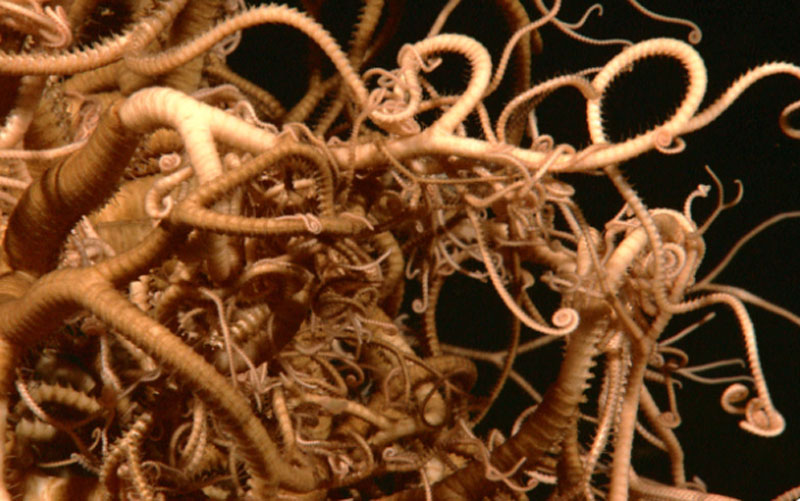
#1
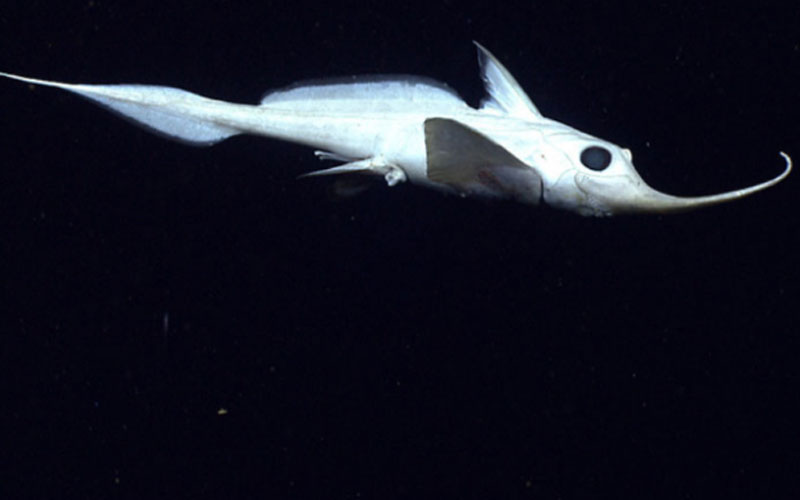
#2
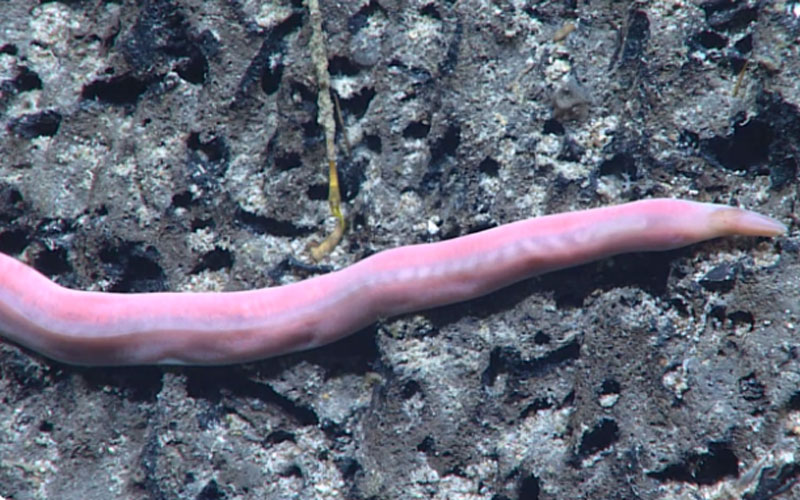
#3
Option 1: Basket star
What is a basket star?
Like their name suggests, basket stars are closely related to brittle stars and other sea stars. The reason they look so different is because their arms split off from one another, creating a network of grasping appendages that help them find and collect food. The basket star in the video above was found while exploring Indonesian waters in 2010.
Why should you vote for it?
Basket stars can make quite the spooky first impression with their many swaying arms. The basket star in the video above is from the genus Gorgonocephalus, a name that reflects its resemblance to the serpents on a mythological gorgon’s head. Look a little closer, though, and you’ll see that basket stars can also be surprisingly good neighbors: this basket star seems to be home to several shrimp!
Option 2: Rhinochimaera
What is a rhinochimaera?
Commonly known as ghost sharks or rat fish, chimaeras are cartilaginous fish most closely related to sharks and rays. The "rhino" in rhinochimaera refers to the long noses that give some species of chimaera such a distinctive look, like the one in the video above. This rhinochimaera was found while exploring Hydrographer Canyon as part of the Northeast U.S. Canyons Expedition 2013.
Why should you vote for it?
This rhinochimaera looks quite ghostly floating through the water. Movie fans might recognize that this particular animal looks a lot like Zero, Jack Skellington’s ghost dog in "The Nightmare Before Christmas."
Option 3: Nemertean worm
What is a nemertean worm?
Also known as a ribbon worm or proboscis worm, nemertean worms like this one roam across the seafloor on slime trails. To hunt, these worms surprise their prey with a long, venomous appendage called a proboscis. The nemertean worm in the video above was found during the 2021 North Atlantic Stepping Stones expedition.
Why should you vote for it?
It may not look like much, but the nemertean worm is a fascinating animal. Along with its curious hunting strategy, many nemertean worms like the one above use a unique method to escape from predators: splitting apart! In many cases, the smaller worms that the animal splits into when stressed continue to survive as separate creatures.
Can’t get enough of the deep-ocean Halloween spirit? You can find pumpkin carving templates and more spine-tingling resources on the NOAA Spooky Science page.
All videos courtesy of NOAA Ocean Exploration.
